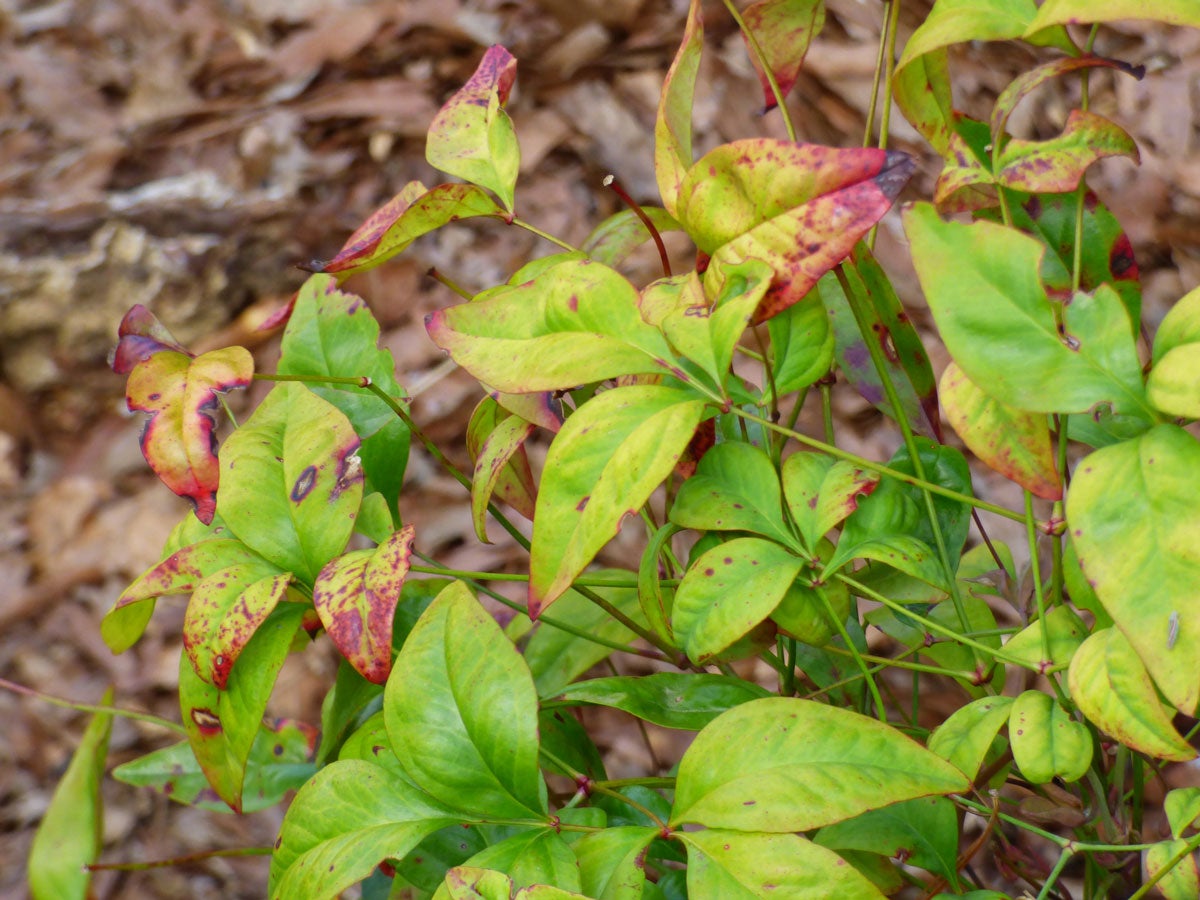Blueberry Leaf Spot Treatment: Learn About Types Of Blueberry Leaf Spot


Spotting on leaves may mean more than a cosmetic problem. There are several types of blueberry leaf spot, most of which are caused by different fungi, which can seriously affect the crop. Blueberries with leaf spot often look like they were injured with chemical sprays or hail, but other signs can help discern fungal diseases from mechanical or environmental injury. Early leaf spot control on blueberry with selected fungicide can help prevent these diseases from taking hold and causing defoliation and reduced vigor.
Types of Blueberry Leaf Spot
Blueberries with leaf spot are common at any point in the growing season. While there may be some signs of disease on flowers, stems or even fruit, the primarily affected part is the leaf. As the disease progresses, the leaves begin to die and fall off. Such defoliation reduces a plant's ability to photosynthesize. Recognizing disease symptoms is key to designing effective blueberry leaf spot treatment and prevention of disease the next season. Anthracnose and Septoria are the two main causes of leaf spotting. Each is a fungal organism that overwinters in soil or plant debris and spreads primarily through rain splashing. Alternaria is another common leaf spot fungus which attacks many types of plants. Gloeocercospora leaf spot is also prevalent on blueberry crops but causes little major damage. Valdensinia is a relatively new disease that causes early leaf drop and low plant vigor. No matter the fungal organism, most types of blueberry leaf spot occur during wet periods. The moisture causes the overwintered spores to flourish and spread. Symptoms may appear as early as three days after infection but, in most cases, take up to 4 weeks to appear. Most infections occur in early spring when temperatures are warming and rains are most prevalent and attack the newest growth. Mature leaves are rarely affected severely. The best leaf spot control on blueberry is clean up post season. Most disease overwinters in dispelled plant matter, which should be removed and destroyed.
Symptoms on Blueberries with Leaf Spot
The overall symptoms are very similar in each disease organism. A closer look can help define which disease type is affecting the plant.
- Double Spot – Initial spots are tiny but grow larger in late summer. Spots spread to a classic fan shape with secondary necrosis around the original spot. The necrosis is darker on one edge of the original spot.
- Anthracnose – Small reddish flecks on leaves and stems. Large brown lesions on leaves which eventually infect stems. Stems of current year growth develop red circular lesions at the leaf scars which progress to the rest of the stem.
- Septoria – The heaviest infection is from June to September. Small white spots with tan to purplish borders.
- Gloeocercospora – Large dark brown, circular lesions on leaves in mid-summer. The edges of the lesions become a lighter tan.
- Alternaria – Irregular to round brown or gray spots surrounded by a red border. Symptoms appear very early in spring after cool, wet weather.
- Valdensinia – Large round bull's eye spots. Spots spread rapidly to stems within days and cause early leaf drop.
Blueberry Leaf Spot Treatment
End of season cleanup is crucial. There are several cultivars that have been bred with resistance to many of these diseases and include:
- Croatan
- Jersey
- Murphy
- Bladen
- Reveille
Fungicides should be used in areas with leaf spot problems. An early application is recommended followed by treatment every 2 weeks from harvest until August. Benlate and Captan are the two most used fungicides in blueberry production. Avoid walking around blueberry stands as a single leaf transmitted to an uninfected blueberry can spread infection. In some cases, the disease can move on contaminated machinery, containers and tools. Disinfect each as you move from plant to plant. Many commercial growers top their plants after harvest, removing old foliage. The new foliage that emerges will nourish the plant and generally is free of disease. The use of resistant cultivars combined with fungicides and good hygienic practices can drastically reduce leaf spot disease and its movement from plant to plant. Note: Any recommendations pertaining to the use of chemicals are for informational purposes only. Specific brand names or commercial products or services do not imply endorsement. Chemical control should only be used as a last resort, as organic approaches are safer and more environmentally friendly.
Sign up for the Gardening Know How newsletter today and receive a free copy of our e-book "How to Grow Delicious Tomatoes".

Bonnie Grant is a professional landscaper with a Certification in Urban Gardening. She has been gardening and writing for 15 years. A former professional chef, she has a passion for edible landscaping.